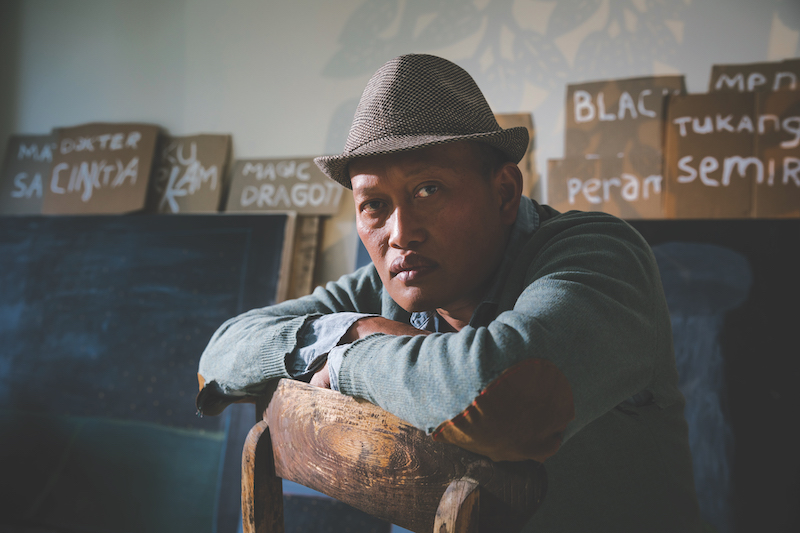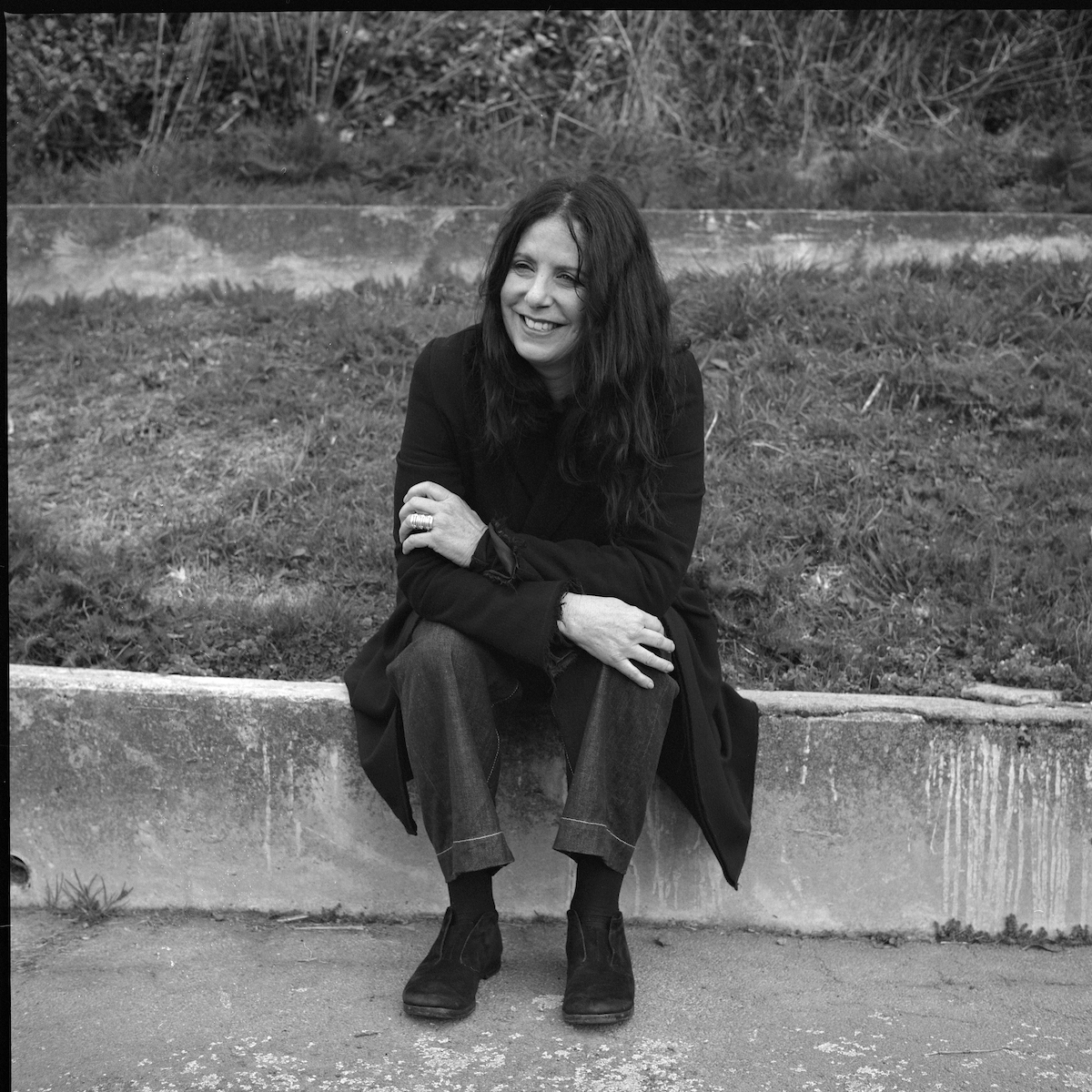Jumaadi: The Storyteller
Based on a life lived between two worlds, Jumaadi’s works speak a language we all understand, drawing deeply from the well of common humanity.
Words: John Mcdonald
Photography: Jacquie Manning
JUMAADI is a storyteller, a cosmopolitan folk artist who lives on Sydney’s North Shore but has never lost touch with his roots in Sidoarjo, East Java. He came to Australia in 1996, at the age of 23, to study at the National Art School in Sydney. Having held his first solo exhibition before graduation, he has never suffered a moment’s respite in his creative activity. His November exhibition at the King Street Gallery on William will be his 36th – an extraordinary achievement in a career of 20 years.
Jumaadi has shown with commercial galleries all over Australia, notably Legge, Watters, and now King Street in Sydney; Jan Manton in Brisbane, and William Mora in Melbourne. He has enjoyed surveys at regional galleries such as Maitland and Mosman – the latter hosting the show, My love is an island far away, earlier this year. He has undertaken residencies around Australia, and in countries such as Malaysia, China, the Netherlands and the United States.
His work has been featured in numerous international surveys, including the 2013 Moscow Biennale. In the lead-up to the COVID-19 lockdown, Jumaadi was preparing new installations for the 2020 Gwangju Biennale (now postponed until February 2021), and the next edition of the Asia- Pacific Triennial in Brisbane.
Although he comes from a village with a powerful sense of tradition, from his teenage years Jumaadi was eager to learn about contemporary art. This was one reason he came to Sydney; another was the city’s close proximity to nature. Jumaadi claims to have no affinity with the mechanical world, which is why he likes to paint on pieces of buffalo hide cut into slightly wonky shapes. These works occupy the gallery wall in a very different fashion to the squares and rectangles preferred by most western artists. In Jumaadi’s exhibitions everything seems to have found its final contour by some organic process, rejecting the conventions of framing.
In the works he is showing at King Street, painted on buffalo hide and Balinese cloth, Jumaadi dissolves the boundaries between the natural world and private fantasy. Most of the paintings were made in a village near Jogjakarta before the coronavirus sent the artist hurrying back to fortress Australia. “It’s a little bit abstract,” says Jumaadi, when quizzed on his subject matter. “It’s a sort of love story that I’ve made up. They’re like meditations on emotional states such as sentimentality or loneliness, very basic things we all have to deal with from time to time.”
In these pictures, male and female angels meet and kiss in mid-air. A man and woman lie side-by-side in a tent, beneath the branches of a forest that improbably shares this space. A fetus is suspended in a womb that hangs suspended over a pool in which crocodile-like monster lurks, and a couple sit facing each other in a tiny boat. Fully grown trees extend from each side of the womb. In another picture a tree seems to be wearing a voluminous wedding dress.
Unlike earlier works that drew upon stories from the Ramayana, or the lyrics of Indonesian writer, Chairil Anwar, these new images are poetic fragments born from Jumaadi’s self-reflections. “It comes from my own life,” he says. “It’s to do with the experience of being a migrant, which is almost a universal experience these days.
“It’s about the distance between people, about looking inside and looking outside. It’s about how we relate to nature.”
Each work features strong, rhythmic patterning, as insistent as the motifs on Indonesian textiles. Jumaadi says that laying in patterns is a meditative experience, an activity one can pursue when “there is a pause of ideas”. He also points out that almost all the traditional communities of the world cover surface with their own distinctive, often sacred, patterns.
It would be easy to classify Jumaadi as an Indigenous artist, but it’s not a bandwagon he is eager to join. He feels there are many more obvious candidates in Indonesia, starting with Bali, where ritual plays such a dominant role in everyday life. His own family were working-class people employed in factories or in agriculture. He sees Indigenous people as being partly defined by the challenges of the modern world. For his own part he says he has never felt oppressed, never felt the need to struggle or fight back.
What Jumaadi aims for is a magical distillation of some of the most important things in life – love, procreation, a sense of unity with nature. These are themes that appeal as strongly to middle-class Australians as to villagers in Java. Based on his own life’s path as an artist suspended between two worlds, these works speak a language we all understand, drawing deeply from a well of common humanity.
“I first saw Jumaadi’s work when he was still at The National Art School. Since then, I have seen his work evolve and increase in its ambitions. I find there is a really compelling use of materials that relate to the activity of making and of being in the studio. They have a sense of being made and laboured over.”
“I’m also drawn to the narrative drive in his work and of its emotional scope – it is anchored in traditions such as the shadow puppets – but uses tradition as a means to expand what he is trying to say rather than being restricted by rules and obligations.”
“I think Jumaadi is a very compelling model of what a contemporary artist could be – albeit in a time of plague where movement across borders is difficult. His work is centred around family in Sydney and Indonesia, and he moves between those two spaces. It fuses together those two cultures in a very personal way.”
“Jumaadi brings the past and present together in the production of his work and allows people their own private entry into his visual world. His amazing ability to think outside the square in creating artworks originates from a uniquely individualistic perspective on art and the state of contemporary society. As a multi-disciplinary artist, who works contemplatively and beautifully in painting, drawing, installation, sculpture, shadow puppetry and performance art, he easily incorporates and utilises the talents of other artist, together with his ideas, and is generous in all aspects of the creative process.”
“There is strong demand and interest in Jumaadi’s work in between exhibitions, and the amount of available work is never excessive. Since his last show with us, Jumaadi has entered many permanent collections across Australia, and been invited to exhibit in New York, Jakarta and China. As a result, there will be an increase in Jumaadi’s prices for his forthcoming show as his career trajectory progresses at a promising pace.”
This article was originally published in Art Collector issue 94, October to December 2020.









